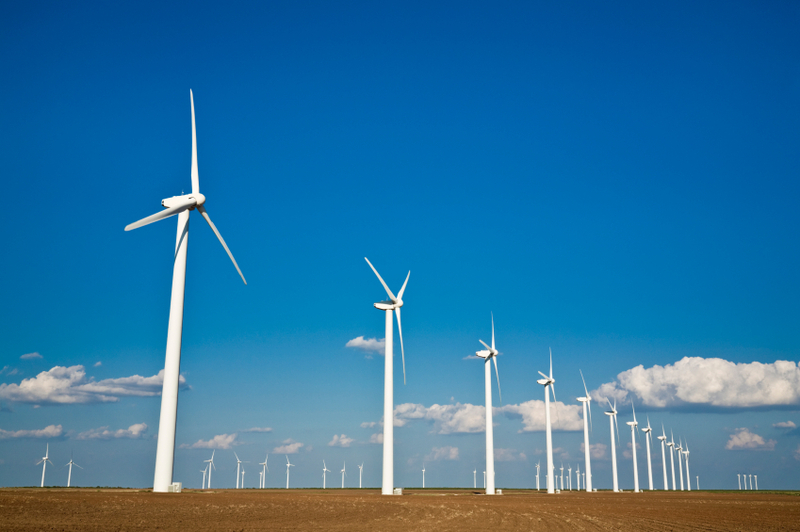
Source: Adapted from National Energy Education Development Project (public domain)

Source: Stock photography (copyrighted)

Source: Lysippos, Wikimedia Commons author (GNU free documentation license) (public domain)
There are two basic types of wind turbines:
- Horizontal-axis turbines
- Vertical-axis turbines
The size of wind turbines varies widely. The length of the blades is the biggest factor in determining the amount of electricity a wind turbine can generate. Small wind turbines that can power a single home may have an electricity generating capacity of 10 kilowatts. The largest turbines have generating capacities of 5,000 to 8,000 kilowatts. Large turbines are often grouped together to create wind power plants, or wind farms, that provide power to electricity grids.
Horizontal-axis turbines are similar to propeller airplane engines
Horizontal-axis turbines have blades like airplane propellers, and they commonly have three blades. The largest horizontal-axis turbines are as tall as 20-story buildings and have blades more than 100 feet long. Taller turbines with longer blades generate more electricity. Nearly all of the wind turbines currently in use are horizontal-axis turbines.
Vertical-axis turbines look like egg beaters
Vertical-axis turbines have blades that are attached to the top and the bottom of a vertical rotor. The most common type of vertical-axis turbine—the Darrieus wind turbine, named after the French engineer Georges Darrieus who patented the design in 1931—looks like a giant, two-bladed egg beater. Some versions of the vertical-axis turbine are 100 feet tall and 50 feet wide. Very few vertical-axis wind turbines are in use today because they do not perform as well as horizontal-axis turbines.
Wind power plants, or wind farms, produce electricity
Wind power plants, or wind farms, are clusters of wind turbines that produce large amounts of electricity. A wind farm usually has many turbines scattered over a large area. One of the world's largest wind farms, the Horse Hollow Wind Energy Center in Texas, has about 420 wind turbines spread over about 47,000 acres. The project has a combined electricity generating capacity of about 735 megawatts (or 735,000 kilowatts).



